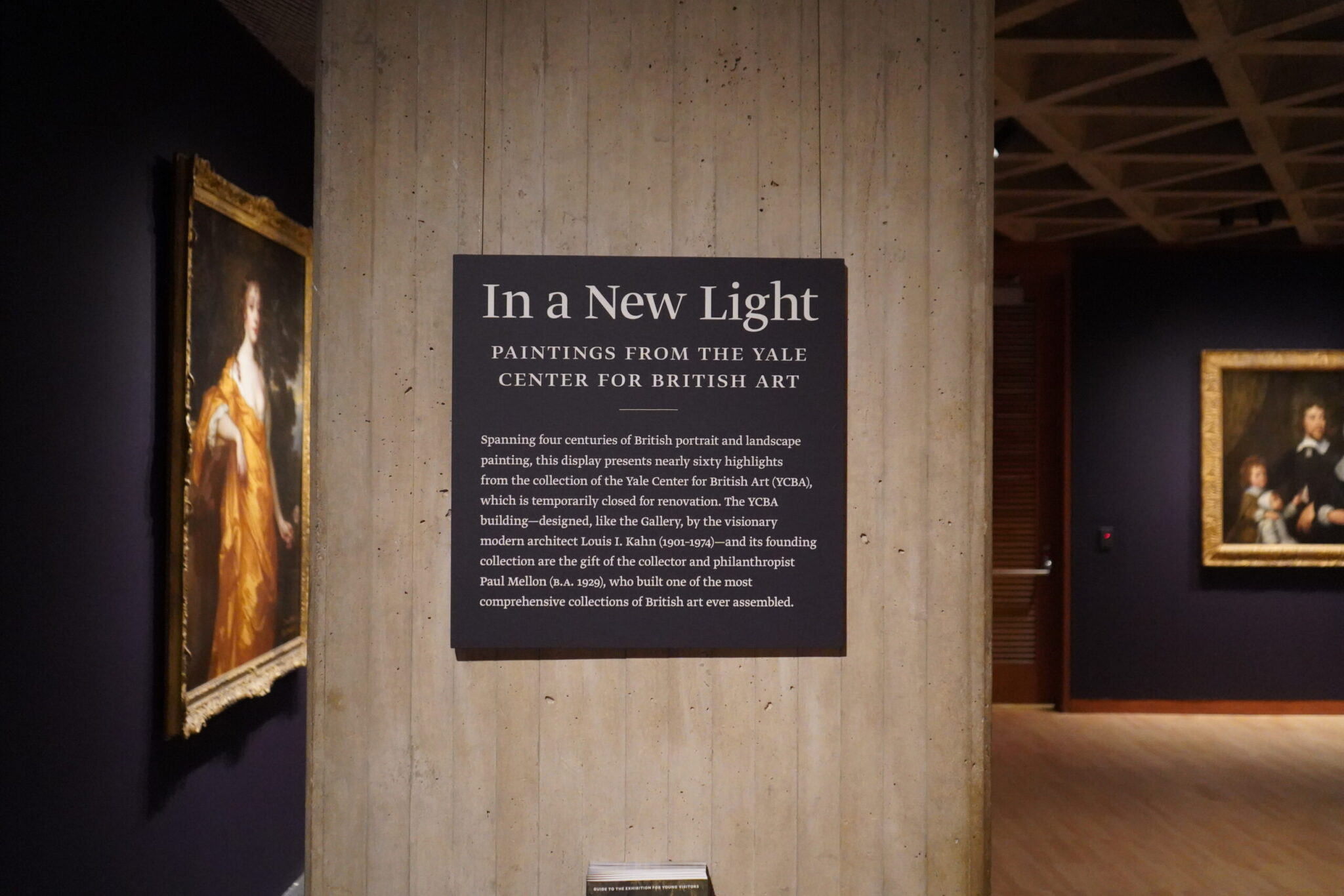Yale Center for British Art exhibit paints the country in a “New Light”
While the YCBA is under renovation, the Yale University Art Gallery is showcasing a new exhibit featuring British art.

Cody Skinner, Contributing Photographer
Upon navy blue and purple walls, the gilded frames of 52 paintings from the Yale Center for British Art offer a tour of the English art tradition through seascapes, landscapes and profiles in the gallery’s newest exhibit, “In a New Light.”
From March 24 through Dec. 3, 2023, paintings from the Yale Center for British Art are displayed in a reimagined exhibit within the Yale University Art Gallery as the YCBA building undergoes structural conservation efforts. The exhibition includes pieces from artists Joseph Mallord William Turner, Richard Parkes Bonington and John Constable. Spanning four centuries of Jacobean Portraiture to Abstract Impressionism, “In a New Light” provides visitors with a Joycean tour of British culture and natural beauty.
“I am thrilled that a substantial number of our paintings will remain on view for audiences
to enjoy while our building is closed,” Martina Droth, deputy director and chief curator of the YCBA wrote in a press release. “This is an exciting time for us to reimagine the collection as we plan a complete reinstallation of our own galleries over the coming months. I look forward to experiencing our paintings in a new context and configuration at the Gallery while envisioning our reopening.”
Works in this exhibit reflect a diverse tapestry of British culture, as in William Hogarth’s “The Beggar’s Opera,” which renders a scene from the popular Johann Christoph Pepusch opera of the same name, and George Stubbs’ “Reapers,” which pays tribute to the manual laborers who shaped the British countryside.
“I think that it’s very interesting to see the collection of works they’ve pulled from the YCBA because it’s its own sort of experience, and I think that the way that the collections are organized is very conducive to a holistic understanding of British art,” said Anabel Moore ’25, who is an intern with the Yale Center for British Art and one of the editors for the News’ WKND desk.
Founded by art collector and philanthropist Paul Mellon ’29, a large part of the YCBA’s collection consists of his donations of 18th-century art. Droth estimated that the Paul Mellon collection, especially for paintings and sculpture, makes up over 70 percent of the collection.
The exhibit delves deep into the artistic processes of Turner, Bonington and Constable — whose finished and uncompleted works are shown side-by-side. Constable’s nearly 8- by 10-inch sketch “Hadleigh Castle,” for example, is shown in the same room as its 48- by 64 ¾-inch completed counterpart.
“For our eyes today, we really appreciate them as paintings,” expressed Droth about the unfinished works. Turner’s “Inveraray Pier,” despite being unfinished, offers a fascinating study of light, linking Turner to the French Impressionists who followed him. “It doesn’t matter whether they were finished or unfinished at the time,” added Droth. “I think it appeals to our sensibilities.”
Employees and volunteers at the center told the News that the placement of paintings on the YUAG’s fourth floor involved a process of careful consideration.
Margaret Mann, a volunteer YCBA docent, pointed out the humor of juxtaposing Francis Bacon’s “Study of a Head” — an especially loud and claustrophobic painting of a screaming bust — next to Gwen John’s “The Pilgrim” — a subdued, mature depiction of a seated woman in a stone-colored cloak with an equally cold expression.
Droth explained that the placement was intentional. It aims to draw attention to Gwen John, whose work had gone largely unnoticed compared to Bacon. Droth also said they chose to separate the Turner, Bonnington and Constable pieces into a separate section from the rest of the British oeuvre to guide visitors as they encounter the artists’ works.
Mann highlighted George Stubbs’ “Zebra” as a significant painting reflecting Britain’s history of colonization. The painting portrays the namesake mammal in a European forest, far removed from its home in the African savannah.
“It’s a sentient being who was taken from its native land — Africa — and put on display. When she died, she was stuffed and trodden around the country,” Mann said. “And there are some people at the museum who feel she’s a symbol of all that’s wrong with the history of the British empire.”
Nevertheless, the exhibit celebrates the expanse of British artistic ambition. Thomas Gainsborough epitomizes this diversity in the contrasts between his only two works in the exhibit.
“Mary Little, later Lady Carr,” a female portrait, flaunts Gainsborough’s background in fabrics through cascading pink silk and intricate lace bleeding into the foliage clutched in Mary Little’s bracelet-clad hands.
“Landscape with Stream and Weir,” placed right beside Lady Carr, showcases a soft landscape, washed in dark, unassuming colors, illustrative of the environment largely shielded from the view of British aristocracy.
The YCBA is set to reopen sometime in 2024.
Correction 9/11: The original article misstated where one of the interviewees, Anabel Moore, worked.







